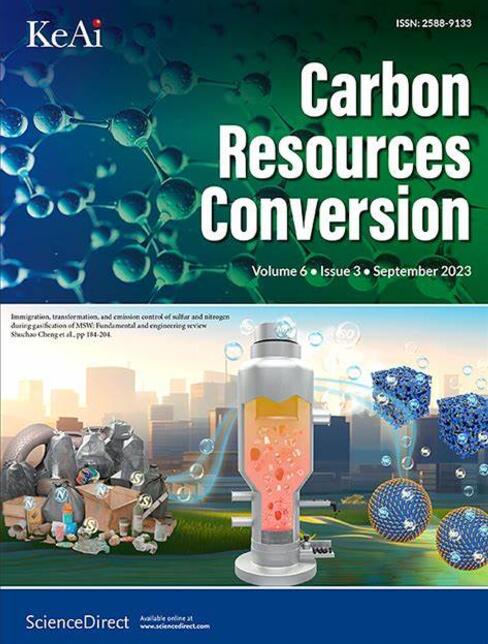Hydrophobicity and performance analysis of beverage and agricultural waste torrefaction for high-grade bio-circular solid fuel
IF 7.5
3区 环境科学与生态学
Q2 ENERGY & FUELS
引用次数: 0
Abstract
Torrefaction is recognized as a high-performance technology for converting raw biomass into high-grade solid biofuel. In this study, hydrophobic and ANOVA analyses were employed to investigate torrefied brewery waste, palm kernel shell, and water hyacinth residue. Herein, the torrefaction experiments were conducted at four temperatures (180, 230, 280, and 330 °C) for a residence time of 30 min. The biomass type and temperature were crucial in determining the optimum conditions for three response parameters: energy yield (EY), specific energy consumption (SEC), and hygroscopic reduction equilibrium (HRE). Hydrophobicity was assessed by measuring the contact angle (CA), and equilibrium moisture content (EMC) to represent hygroscopic behavior. The ANOVA results indicated that temperature had the most significant impact on the response parameters. Optimal torrefaction of brewery waste at 180 °C yielded an EY of 82.05 %, SEC of 81.88 kWh/kg, and HRE of 23.2 %. These findings highlight the advantages of biomass-derived torrefaction products in waste utilization, transport, and storage of biomass-derived torrefaction products. Furthermore, this study demonstrates an efficient method for enhancing the fuel quality of biomass, contributing significantly to the bio-circular green economy concept.

将饮料和农业废弃物热解为高级生物循环固体燃料的疏水性和性能分析
焙烧是一种将生物质原料转化为高级固体生物燃料的高性能技术。本研究采用疏水分析和方差分析对发酵啤酒废弃物、棕榈仁壳和水葫芦渣进行了研究。在此,在4个温度(180、230、280和330°C)下进行烘焙实验,停留时间为30分钟。生物质类型和温度是确定三个响应参数(能量产率(EY)、比能量消耗(SEC)和吸湿还原平衡(HRE))的最佳条件的关键。疏水性通过测量接触角(CA)和平衡含水率(EMC)来评估。方差分析结果表明,温度对反应参数的影响最为显著。啤酒废弃物在180℃下的最佳焙烧效果为:EY为82.05%,SEC为81.88 kWh/kg, HRE为23.2%。这些发现突出了生物质衍生热解产品在废弃物利用、运输和储存方面的优势。此外,该研究还展示了一种提高生物质燃料质量的有效方法,为生物循环绿色经济概念做出了重大贡献。
本文章由计算机程序翻译,如有差异,请以英文原文为准。
求助全文
约1分钟内获得全文
求助全文
来源期刊

Carbon Resources Conversion
Materials Science-Materials Science (miscellaneous)
CiteScore
9.90
自引率
11.70%
发文量
36
审稿时长
10 weeks
期刊介绍:
Carbon Resources Conversion (CRC) publishes fundamental studies and industrial developments regarding relevant technologies aiming for the clean, efficient, value-added, and low-carbon utilization of carbon-containing resources as fuel for energy and as feedstock for materials or chemicals from, for example, fossil fuels, biomass, syngas, CO2, hydrocarbons, and organic wastes via physical, thermal, chemical, biological, and other technical methods. CRC also publishes scientific and engineering studies on resource characterization and pretreatment, carbon material innovation and production, clean technologies related to carbon resource conversion and utilization, and various process-supporting technologies, including on-line or off-line measurement and monitoring, modeling, simulations focused on safe and efficient process operation and control, and process and equipment optimization.
 求助内容:
求助内容: 应助结果提醒方式:
应助结果提醒方式:


